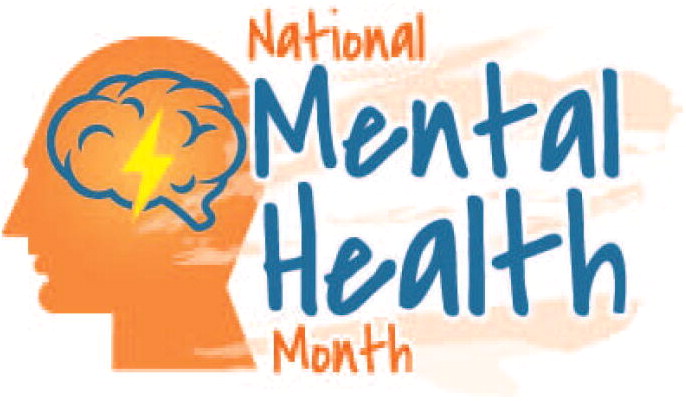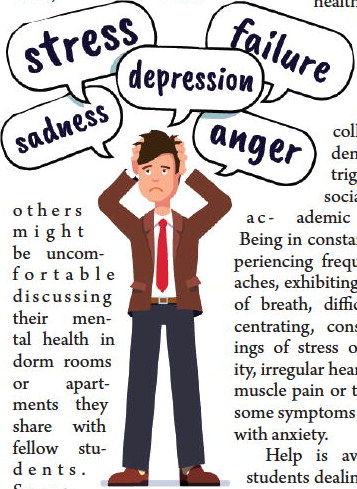May Is …


The threat of anxiety and depression among college students
The moment young people arrive on college campuses and begin their lives as college students marks a significant mile- stone. College provides
many young people with their first taste of independence, and that newfound freedom can sometimes feel overwhelming, especially when it's coupled with academic challenges that are much more rigorous than they were in high school.
According to data from the National Alliance on Mental Illness, 80 percent of college students feel overwhelmed by their responsibilities as a student.
NAMI data also indicates that 50 percent of college students rate their mental health as below average or poor. Anxiety and depression are two mental health issues that affect many college students as they try to juggle the various demands associated with being students. Anyone who suspects they or a student they know is experiencing either of these issues should reach out to a mental health professional immediately.
Depression
Depression among
college students may have been exacerbated during
the COVID-19 pandemic.
A 2020 survey conducted by the Healthy Minds Network in collaboration with the American College
Health Association found that the rate of depression among college students has increased since the onset of the pandemic. Though students typically have readily available access to mental health professionals on campus, that access has been compromised during the pandemic as students, counselors and educators learn and work remotely.
College mental health
counselors were available via video conferencing during the pandemic, but students may not be aware of that, while others might be uncomf ortable d i scussing their mental health in dorm rooms or apartments they share with fellow stud ents.
Symptoms of depression include feelings of sadness or hopelessness, loss of motivation, sleeplessness, trouble concentrating, changes in appetite and body weight, and loss of interest in social activities.
Anxiety
A 2017 report from
Penn State University's Center for Collegiate
Mental Health found that anxiety is one of the two most common reasons college students seek mental health services (the other is depression). In fact, the Anxiety and Depression
Association of America reports that 13 percent of college students have been diagnosed with a mental health cond ition linked to anxiety.
Anxiety among college students can be triggered by social and/or ac- ademic pressures.
Being in constant fear, experiencing frequent headaches, exhibiting shortness of breath, diculty con centrating, constant feelings of stress or irritability, irregular heartbeat, and muscle pain or tension are some symptoms associated with anxiety.
Help is available to students dealing with depression or anxiety. Mental health professionals on campus can be invaluable resources as students try to overcome issues that can affect their quality of life while on campus.









